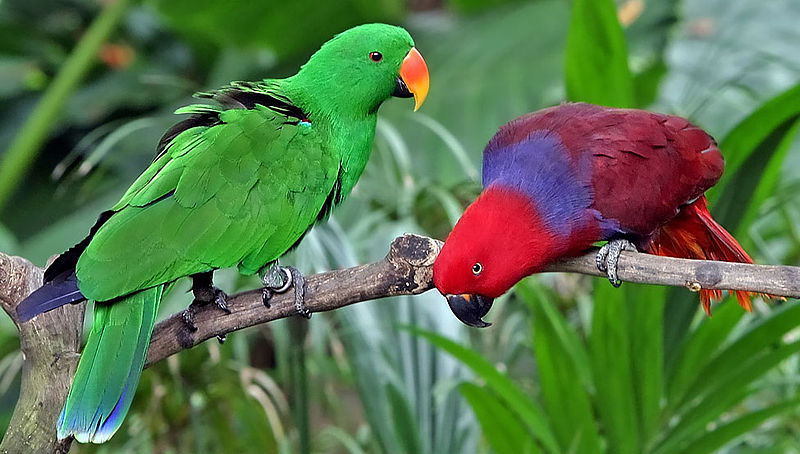Colours
Distinguishing features
There are nine and possibly more subspecies. These have quite varied plumage.
The nominate species is a stocky short-tailed parrot. The male is mostly bright green with a yellow-tinge on the head. It has blue primaries, and red flanks and underwing coverts. Its tail is edged with a narrow band of creamy yellow, and is dark grey edged with creamy yellow underneath, and the tail feathers are green centrally and more blue as they get towards the edges.
The female is mostly bright red with a darker hue on the back and wings. The mantle and underwing coverts darken to a more purple in colour, and the wing is edged with a mauve-blue. The tail is edged with yellowish-orange above, and is more orange tipped with yellow underneath. The upper mandible of the adult male is orange at the base fading to a yellow towards the tip, and the lower mandible is black. The beak of the adult female is all black.
Adults have yellow to orange irises and juveniles have dark brown to black irises. The upper mandible of both male and female juveniles are brown at the base fading to yellow towards the biting edges and the tip. (Wikipedia)
Size
- Up to 40 cm (Length of specimen)
Wingspan
- Up to 90 cm and averaging 89 cm
Synonyms
Distribution
Audio recordings
Calls by a single Eclectus Parrot (Eclectus roratus polychloros) in display flight
© Niels Krabbe
(source)
Diet
Its diet in the wild consists of mainly fruits, wild figs, unripe nuts, flower and leaf buds, and some seeds. Two favorite fruits are the pomegranate and the papaya (pawpaw).
It has an unusually long digestive tract and this is why it requires such a high fiber diet. (Wikipedia)


